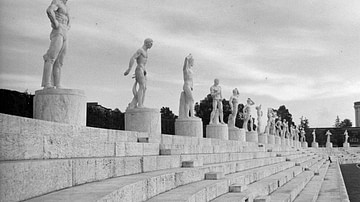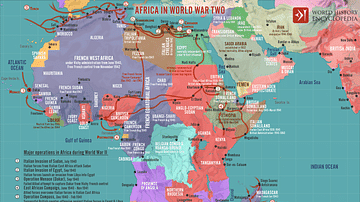Illustration
This map illustrates the extent of the Italian Colonial Empire, established during the era of New Imperialism as Italy sought to assert itself alongside the great powers of Europe. Driven by both economic ambitions and national pride, the empire reflected Italy’s desire for international prestige and territorial expansion, reaching its peak under the fascist dictator Benito Mussolini (r. 1922-43).
Italy’s colonial project began with the acquisition of Eritrea (1882) and Somaliland (1889), followed by the conquest of Libya (1911) from the Ottoman Empire. The 1935–36 invasion of Abyssinia (Ethiopia) resulted in the creation of Italian East Africa. In the Mediterranean, Italy’s expansion was also shaped by irredentism—the nationalist aspiration to reclaim lands considered historically or ethnically Italian—leading to the annexation of South Tyrol, Istria, and the Dodecanese Islands, as well as the occupation of Albania (1939) and parts of Greece and Dalmatia during the Secodn World War (1939-45). The empire collapsed after Italy's military defeat, and all colonial claims were formally renounced in the Treaty of Paris (1947).
About the Author
Cite This Work
APA Style
Netchev, S. (2025, April 16). The Italian Empire in 1942. World History Encyclopedia. Retrieved from https://www.worldhistory.org/image/20362/the-italian-empire-in-1942/
Chicago Style
Netchev, Simeon. "The Italian Empire in 1942." World History Encyclopedia. Last modified April 16, 2025. https://www.worldhistory.org/image/20362/the-italian-empire-in-1942/.
MLA Style
Netchev, Simeon. "The Italian Empire in 1942." World History Encyclopedia. World History Encyclopedia, 16 Apr 2025, https://www.worldhistory.org/image/20362/the-italian-empire-in-1942/. Web. 18 Apr 2025.








